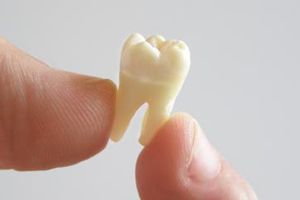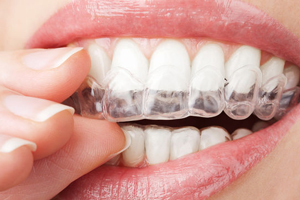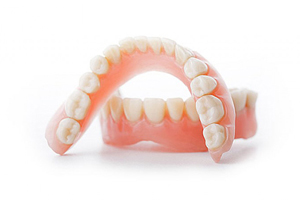
Resources



Bleaching
- We recommend bleaching one arch (upper or lower) at a time, this way you can see the difference in the shade of your teeth.
- Apply a small dot of bleaching material in each tooth in the tray. Remember, a little bleaching material goes a long way! If you notice any burning on your gum tissue, apply less bleaching material in the tray.
- Wear tray for 1/2 hour per day, for two weeks.
- If teeth become sensitive, bleach every other day for a total of 14 days. You can use Sensodyne for 2 weeks before and during bleaching if your teeth are prone to sensitivity.
- Bleaching will only lighten natural tooth surfaces. It will not lighten crowns or tooth colored fillings.
- Do not drink anything that stains your teeth (i.e. tea, coffee, cola) or smoke while bleaching. We are trying to lighten your teeth so dark liquids and smoking makes this process harder to achieve your desired shade/color.
- Take care of your bleach trays by washing them out after each use. Brush them with a toothbrush and then place in the container provided.
- Some individuals teeth bleach quicker than others. Once you reach your desired tooth shade/color, bleach once per month to maintain the desired shade/color. Smokers, coffee and tea drinkers, etc. will require touch-up more often. We sell refill tubes of whitening material. Please stop by during business hours to purchase.
- Place your stone models in a safe place to possibly re-use for additional replacement trays if needed.
- Please call our office if you should have any questions or concerns 217-525-6980.
Click to Download Instructions
Care of Dentures & Partials
- Clean daily. Use a denture brush or soft toothbrush and allow them to soak overnight in a denture cleansing solution. This will help prevent plaque build up and odor.
- Rinse and brush in clean, warm water with denture brush or soft tooth brush.
- Do not brush too hard or use toothpaste to avoid damaging gaskets, plastic or metal parts. Abrasion or scratching the surface of the denture will cause staining and odor.
- Brush your gums, tongue and natural remaining teeth with a fluoride toothpaste, before reinserting denture. This will help stimulate circulation in your mouth, and help maintain good oral health.
- After brushing, rinse with mouthwash.
- Never try to adjust the fit of your denture. This can cause harm to your mouth, or damage to the denture.
- Make appointments for the doctor to look at your oral gum tissue for lesions as well as look at the over wear of your denture at least once a year, more often if you have teeth still present.
- To remove denture: you are simply unlocking the suction created by dentures in the mouth. For removing upper denture-use 2 index fingers to break the seal at the the top of the pink acrylic over the canines or molars. For removing lower denture-slowly pull on your denture while applying a rocking motion. Please ask Dr. Keith to show you the correct way of removing.
- Always store dentures in denture container/tub with denture soaking solution, cleaner, or water to keep them moist. Failure to keep them moist will dry them out and lose their shape.
- Never place them in hot water, this can cause them to warp.
- If your denture has metal attachment, talk to Dr. Keith about how it should be cared for. Placing this particular denture in water can cause the metal pieces to tarnish.
- Remove denture nightly for tissue to rest.
- Warning-pets love to eat dentures.
- If your denture has a soft liner, do not soak in denture cleaner overnight. This will cause the liner to deteriorate quickly. Soak in cool water.
- For partials, do not bite in to place. You could warp or break the partial, so it will not fit correctly. Use two hands to insert and to remove.
- WARNING: Pets love to eat dentures. When they are not in the mouth, make sure your denture is stored in a container.
Click to Download Instructions
Extraction Care
**TODAY: Do not rinse or spit.
**TOMORROW: Rinse every 3-4 hours with a mixture of a 1/4 teaspoon of salt and warm water. A foul taste is normal. Dilute Listerine to rinse, brush your tongue, and roof of mouth.
Bleeding: After extractions, some bleeding is normal (small amounts of blood mixed with saliva can seem to be a lot, but it is normal). If constant bleeding occurs fold the enclosed gauze into fourths, place over the extraction site and bite gently on the gauze for a 1/2 hour and then remove. Elevate you head above your heart and repeat if necessary. If that still does not help, dampen the enclosed tea bag and place it over the extraction site (the natural tannic acid in the tea bag will cause the blood to coagulate).
Pain: If you experience mild-average pain, please use non-aspirin types of medication like Ibuprofen or Tylenol as recommended on the bottle. The area where the anesthetic was injected can be sore and tender. If pain medication was prescribed, please follow the instructions and do not drink alcohol, operate heavy machinery, drive, etc. Make sure that you eat with all pain medications. Pain medications and or antibiotics are not always prescribed, every extraction is different. Another option is the use of clove oil on the gauze provided and place over the extraction area. Use natural clove oil that is used for flavoring foods and teas. Do not use clove oil used for fragrance!!!
Food: Only light and soft foods during the first 24 hours. Do not use a straw or any type of suction or a water pik. Do not eat until the numbness wears off.
Bony Edges/Spicules: Small, sharp bone fragments may work through the gum tissue during the healing process. This is not a root and is quite normal. If it becomes annoying, please call the office for its removal.
Dry Socket: Do you have a dull aching pain where your tooth was removed and the pain is constant even after taking Ibuprofen or pain medications? After an extraction, a clot forms over the extraction area and if the clot should come off too soon you will get a dry socket. If this happens, you need to call the office and we will schedule an appointment for you and use a medicated paste to treat your dry socket. You may need to return to the office for the next few days for repacking. To avoid a dry socket, do not spit, drink through a straw, or smoke.
Suture Removal: Some extractions (not all) require stitches and you will need to return for removal 5-7 days after the extraction.
Click to Download Instructions
